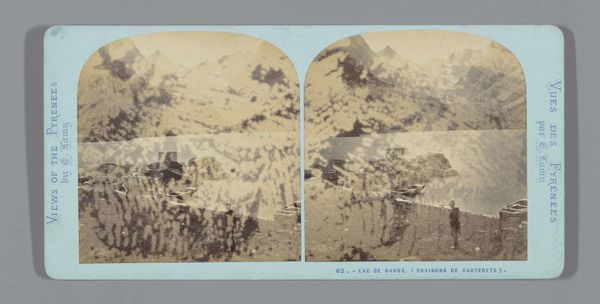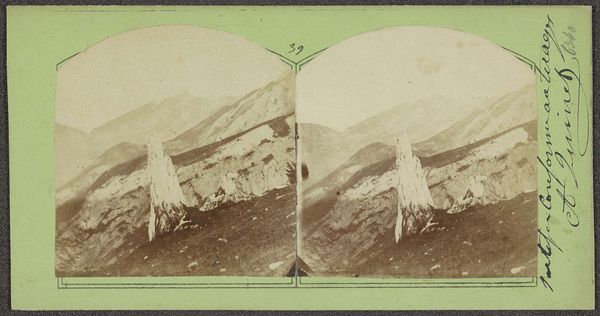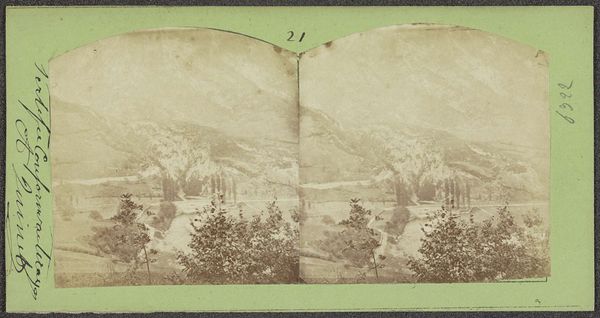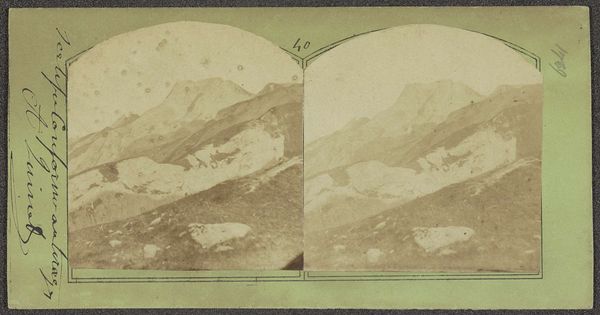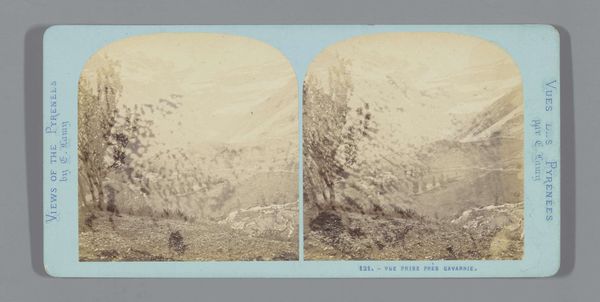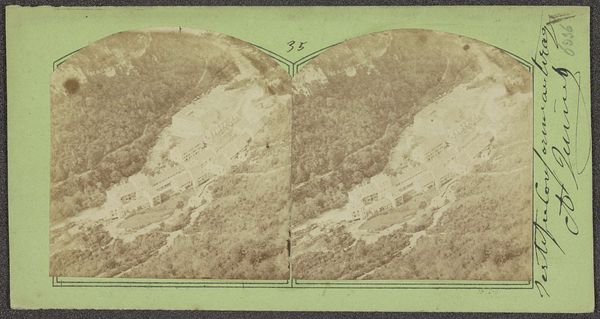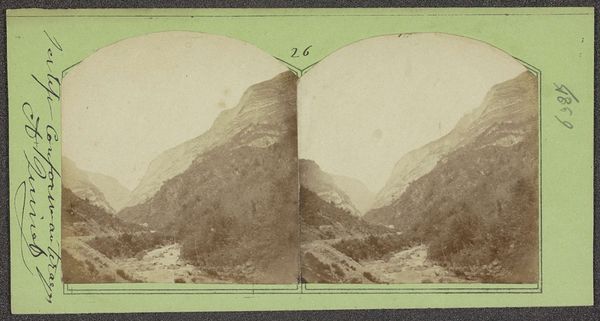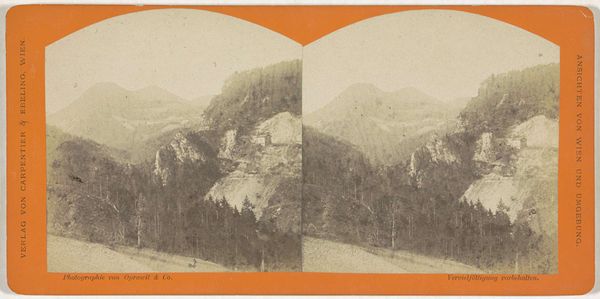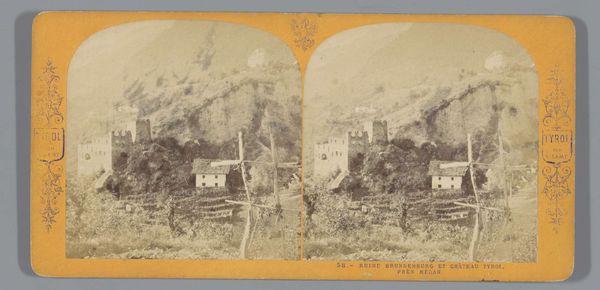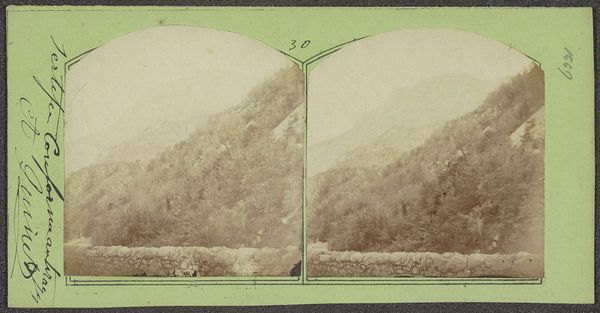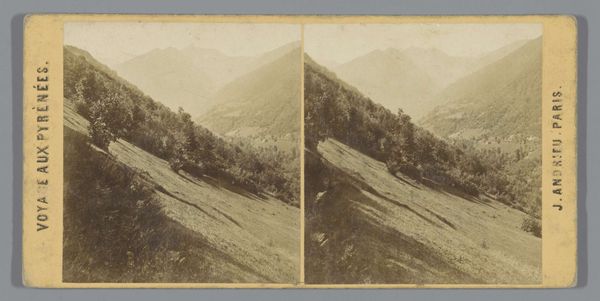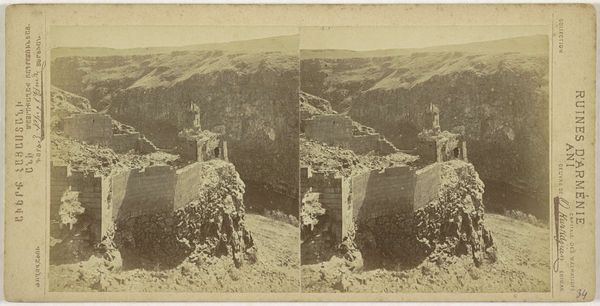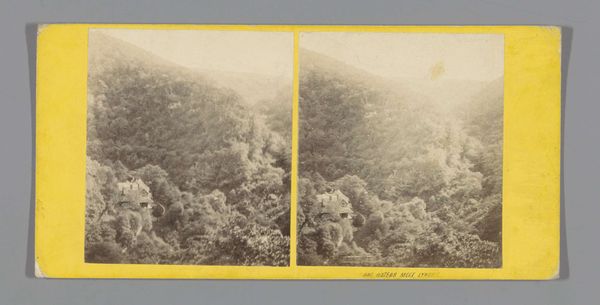
Gezicht op de Ortler nabij Trafoi, gezien vanaf de route naar de Stelviopas 1869
0:00
0:00
Dimensions: height 87 mm, width 178 mm
Copyright: Rijks Museum: Open Domain
Curator: This captivating gelatin-silver print, taken in 1869 by Ernest Eléonor Pierre Lamy, offers us a "View of the Ortler near Trafoi, as seen from the road to the Stelvio Pass". The image immediately strikes me with its sense of isolation. The scale is almost overwhelming. Editor: Absolutely. I’m struck by the overwhelming stillness and, frankly, a sense of the sublime solitude the figures in the foreground appear to be experiencing. It’s not just a mountain range, it's a whole world, indifferent to humanity's fleeting presence. Curator: Indeed. Lamy seems to have positioned his camera to capture that very contrast. Look at how tiny those figures are against the colossal Ortler mountain. They seem to blend with the rocky foreground, underscoring how small we are in relation to nature. We might think about Romanticism's influence at the time. The genre sought to explore the majesty of nature, of course, often against the backdrop of the Industrial Revolution, the advent of steam power. The sublime dwarfed mere humanity. Editor: That reading feels pertinent in light of current eco-politics. The romantic vision here subtly—perhaps unintentionally—underscores our fragile position relative to forces so much larger. The human relationship to these grand spaces feels different through a 21st century lens: in this vista I cannot help but recognize impending loss and rapid environmental change, and it's hard not to bring to this image a kind of melancholic dread that shadows this landscape. What choices and transformations does this landscape force upon those traversing or inhabiting it? Curator: A fascinating point. I'm not sure Lamy would have predicted the way his images would echo through our contemporary consciousness! One thing's for sure: the work provides a potent reminder of both our insignificance and our potential impact on such environments. Editor: Precisely. It challenges us, perhaps inadvertently, to reconsider not just the aesthetics of landscape, but our ethical responsibilities within it. It asks what we see when we look, and why. Curator: Looking at Lamy’s vision of nature gives rise to diverse associations! I believe that our conversation offers two views from disparate points along a fascinating ideological terrain. Editor: Yes. From art history, with socio-political critique intertwined. Thank you for sharing.
Comments
No comments
Be the first to comment and join the conversation on the ultimate creative platform.
